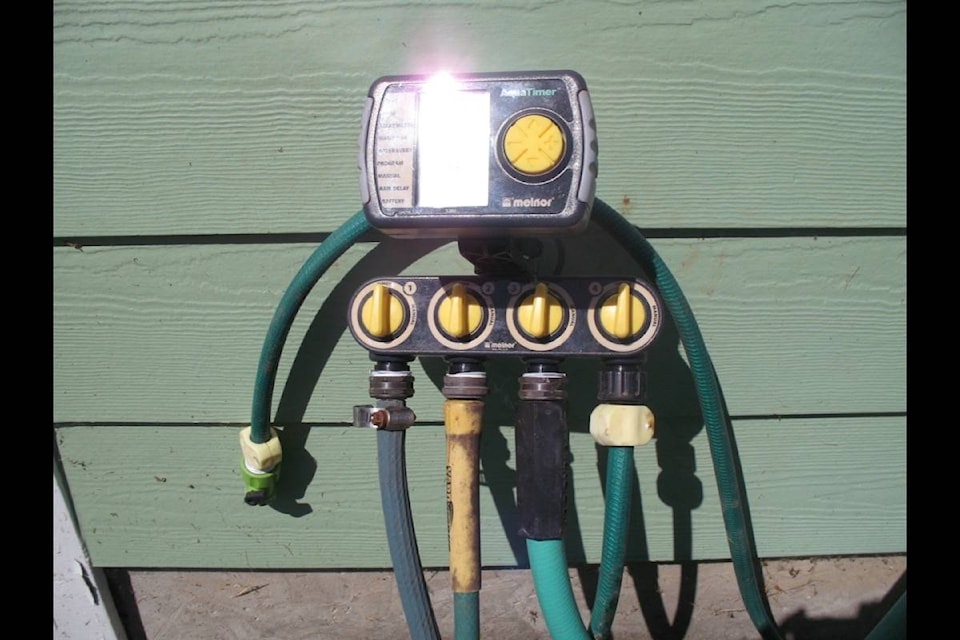I always water my garden as though we have a shortage for a number of reasons.
I don’t want to be profligate with a finite resource like water; overwatering washes away (expensive) nutrients, dry hot soil between soaker hoses discourages slugs and other nasty chomping machines, weeds don’t proliferate between rows and plant leaves remain dry.
This last reason may be the most important because my plants never succumb to mould or other diseases that occur on damp leaves until late in the season when days become shorter and the rains return.
My workload is also greatly reduced and if water restrictions become necessary, it’s just business as usual.
Yes it’s a hassle laying out the soaker hoses, making short pieces of regular hose to join them to a four-connector timer and using Teflon tape to seal the joints to prevent leakage, but I don’t have to constantly remember when to water or time the sprinkler and then move it to another place.
We can do many things to prepare for drought conditions. Put the beds for greens like lettuce, spinach and even cabbage, broccoli and kale in an area that gets some shade and they will need less water. I’ve found that lettuce grows better that way and the cabbages are satisfactory. Compost tea sprinkled on the plants or poured directly on the root bed every few weeks gives plants a boost of nutrients and probiotics that encourages better root growth as the plants forage deeper for water.
Hand water only when setting out new seeds: spray them every morning until they sprout, thin, then put them on the regular schedule with soaker hoses. Continue to thin until the plants are as far apart as you want. In mid-summer it might be safer to start fall crops in flats indoors where you have more control over sun exposure and watering.
When setting out transplants, dig a hole bigger than the root ball and mix into the soil one-quarter to one-half cup of fertilizer.
Pour in a good two cups of tepid water — I like to use fish fertilizer in this water — and muddy in the transplant, firming the soil around the roots. This is a time-consuming job and I haven’t found a shortcut, but your plants will thank you for it by growing fast. Set soaker hoses in place and put them on the three-to-four-day watering schedule right away.
Watering this infrequently encourages deep root growth, allowing plants to survive drought conditions.
Watering by sprinkler or hand-held nozzle more frequently fosters shallow rooting that will dry up if watering becomes restricted. Since it looks like climate change is here to stay it seems wise to prepare for it by learning how to live with drought.
